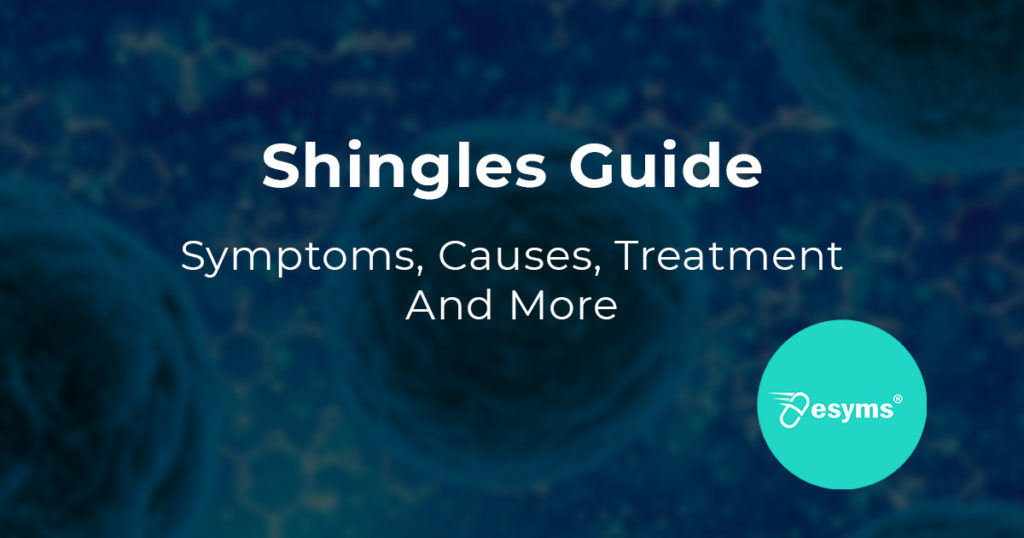Shingles Guide – What Is Shingles, Symptoms, And More
Shingles, also known as Herpes Zoster is a painful rash that develops on your body as a result of the Varicella Zoster Virus, the same virus that causes Chickenpox. In this guide, we cover everything you need to know about Shingles.
BROWSE OUR GUIDE

Health Disclaimer
The contents of this article is meant as general health information and should not be treated as professional medical advice. If you need professional medical help, please consult your healthcare practitioner.
What is Shingles?
Shingles is a painful rash that typically develops on one side of the body (or face). It usually presents itself as blisters that typically scab on over in 7-10 days, and fully recovers in 2-4 weeks. Shingles is a condition that is caused by the varicella-zoster virus — the same virus that causes chickenpox.
What Is The Cause Of Shingles?
Usually, people might catch the chickenpox when they are young. After you’ve had chickenpox, the virus (varicella-zoster) will lay dormant in the nerve tissue near your spinal cord and brain. Years later it may reactivate, travel to the skin surface and cause shingles. If you are not immune to chickenpox (usually people who haven’t contracted it before), you may also catch shingles from someone who is infected by the virus.
What Are The Symptoms Of Shingles?

Shingles usually affects only one side of the body. You may experience the following symptoms:
- Pain, burning, numbness or tingling
- Itching
- Sensitivity to touch
- A red rash that begins a few days after the pain
- Fluid-filled blisters that break open and crust over
- Fever
- Headache
- Sensitivity to light
Is Shingles Contagious?
Shingles is caused by the varicella-zoster virus. If you are suffering from Shingles, you may transmit the virus to someone who is not immune to chickenpox. Hence, it is best to avoid contact with others if you are currently having Shingles.
Who Is At Risk Of Getting Shingles?
Anyone who is an adult who has had chickenpox in the past may develop Shingles. Usually adults over 50 and anyone whose immunity is compromised (due to diseases and medications) are at higher risk.
Treatment Of Shingles
Treatment is aimed at limiting pain, reducing spread of the lesions and preventing post-shingles complications such as neuralgia. Shingles is usually treated using antiviral medications to shorten the length and severity of the illness. For symptom management, pain medication (OTC or prescription), medication for nerve pain, and lotions such as calamine lotion may help reduce effects such as pain and itchiness. Drying agents such as potassium permanganate may be used to treat the vesicles and fluid discharge.
Vaccines for Shingles
There is no universal vaccination program for Shingles in Malaysia. However in the US, the FDA has approved a vaccine called Shingrix. Studies suggest that Shingrix offers protection against shingles for more than five years.
Shingles Death Rate
While the symptoms of Shingles may be severe, the death rate is low at 0.28 to 0.69 deaths per million (source).
Speak To A Healthcare Professional
The contents of this article is meant to be for general health information and does not constitute professional medical advice. If you think you may have shingles, contact your healthcare provider as soon as possible to discuss treatment. You can also consult our certified pharmacists via our telepharmacy service on esyms.
